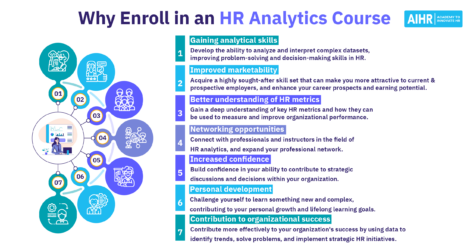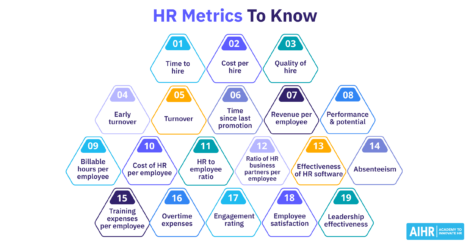How to Conduct an Employee Focus Group: A Full Guide

Employee focus groups are a valuable tool for collecting qualitative data on various workplace issues, gathering feedback, and getting a closer look at your employees’ opinions and ideas. Read on to find out how to conduct a focus group with employees.
Contents
What are employee focus groups?
What is the purpose of an employee focus group?
Employee focus group best practices
What are employee focus groups?
In general, a focus group is a moderated discussion among several individuals to gather specific feedback on how they feel about a product, service, or issue. Focus groups are a widely used technique in market research, advertising, and politics to gain awareness of consumers’ attitudes.
Organizations conduct employee focus groups within the workplace to discover how people perceive and feel about an important issue that’s arisen or a particular topic under consideration. These groups are often used to reveal the level of employee engagement or the effectiveness of particular policies and procedures. Employee focus groups can also be conducted to follow up on employee opinion survey results to gain qualitative data and understand trends.
Human resources plays a key role in conducting employee focus groups and acting on the results.
During an employee focus group session, a moderator asks participants verbal, open-ended questions to spur varied and nuanced responses. It is an environment where attendees can speak freely and engage with each other. The ability to observe interactions and nonverbal communications allows the moderator to hone in on what employees are genuinely thinking and feeling. This offers more insight than written questions that are scored on a scale.
What is the purpose of an employee focus group?
Employee focus groups are a unique research tool to uncover beneficial information while directly involving employees in the process of decision-making and business solutions.
This type of input serves several functions, including the following:
- Supplying a more in-depth method than written employee surveys to reveal workplace trends and fresh ideas.
- Uncovering the strengths and weaknesses of your organization and actions for addressing or sustaining them.
- Forming a more comprehensive picture of how your workforce feels about your organization through qualitative insights.
- Providing the opportunity to show that you value employee feedback and are dedicated to improving the workplace.
Employee focus group best practices
Focus groups must be carried out properly to ensure they are effective, so you need a well-designed plan. Here are nine tips for successfully conducting an employee focus group:
1. Establish the size and composition of the focus group
It’s important to have a variety of employee perceptions, so you need to structure the makeup of your group accordingly. When it comes to size, “focus groups should have no more than 12 employees at a time.” Smaller groups give everyone a chance to contribute and allow conversations to flow more smoothly. Additionally, it makes it easier to keep the gathering to a briefer time.
You can base participant selection on including a cross-section of people according to employee status, demographics, length of service, etc. You may also choose to source representatives from every department or from certain groups that are struggling with particular issues. Keep in mind that maintaining separate sessions for managers and non-managers will encourage more honest input and the free exchange of thoughts.
2. Choose a capable facilitator
Selecting the right facilitator is an important factor in obtaining satisfactory participation and results from your employee focus groups. You may already have an experienced moderator within your organization, or you can hire a knowledgeable professional. An excellent facilitator will possess the following characteristics:
- Personable – Commands respect but creates an environment that makes participants feel comfortable expressing themselves. Keeps the discussion lively and interesting and is able to maximize participation in or to generate multiple ideas and opinions
- Organized – Is prepared with a written agenda and sets boundaries to keep the session productive and on topic.
- Active listener – Pays close attention to each participant’s responses and probes for deeper explanations. Comprehends feelings and can paraphrase and unpack thoughts.
- Responsive – Doesn’t allow anyone to dominate the discussion. Handles quick changes in thought and makes connections with participants’ statements.
- Impartial – Stays objective without revealing personal views or steering the discussion to favor the organization’s opinions.
3. Find a competent coordinator
The coordinator plays a crucial role throughout the entire process of planning and conducting an employee focus group by organizing the arrangements and supporting the facilitator. This person should be very familiar with the topics and protocols to help ensure the session runs smoothly and according to the schedule. Specific duties can include the following:
- Choosing a suitable location
- Facilitating pre-session communication with participants
- Making arrangements for proper equipment and supplies
- Greeting participants
- Overseeing audio or visual recording of the session, if applicable
- Taking detailed notes
4. Develop your focus group questions
The entire point of a focus group is to collect meaningful data, so the questions you ask must be carefully crafted and relevant. Limit the number of questions and keep them:
- Brief
- Focused on one element
- Unambiguous
- Non-threatening
Your employee focus group topics are best laid out in a conversational manner to inspire discussion. The most useful questions are open-ended and impossible to answer with just “yes” or “no.” These allow participants to expand on their thoughts with details that bring deeper insights.
Your set of questions should include these three types:
Introductory questions: Start with a couple of general questions that break the ice and get the conversation going before you hone in on the specifics, such as?
- How do you describe [company name] to your family and friends and explain what we do?
- What is your favorite memory from working here?
Key questions: These are the main questions at the heart of the discussion that will provide the information you’re aiming to uncover. For example:
- Explain how the work you do aligns with company goals.
- Describe an issue that hinders your professional growth in the company.
Exit question: Wrap up the session with a question to see if something relevant was missed and give one last chance for contributors to be heard:
- Is there anything else you would like to say about the topics we’ve covered?
If you are conducting a series of focus groups for the same topics to reach a large number of employees, be sure to make them identical. Follow a script and use the same agenda and questions to collect consistent data.
5. Plan the meeting logistics
You’ll need to identify the date, time, and location of the employee focus groups. In terms of scheduling, the meeting should take place during working hours and last from one to two hours.
Selecting the right place for an employee focus group is very important, especially if you will be conducting it offsite. As you collaborate with the coordinator, consider these questions while you assess your location options:
- Is it easily accessible for employees?
- Does it have adequate space and the equipment/tools needed?
- Is it a comfortable environment that is conducive to conversation?
- Is the setting free from distractions?
If you’re conducting a remote employee focus group, choose which tool you’re going to use, for instance, Zoom, Google Meet or Microsoft Teams.
6. Prepare an agenda and meeting guide
An effective employee focus group needs an agenda for the facilitator to follow. Within that structure, build in time to pursue any relevant issues that attendees raise. Here is one agenda format option:
- Welcome and review of meeting objectives
- Review of agenda and ground rules/confidentiality
- Brief introductions by participants
- Topic discussions
- Summary/closing
As you formulate the focus group agenda, you should also create a guide to share with participants beforehand. The guide should explain:
- Purpose of the meeting
- Basic discussion rules
- What taking part in the focus groups involves
- What type of confidentiality and anonymity to expect
- How results will be analyzed and put into action
- Who to contact for more information
7. Analyze results and report your findings
The facilitator and coordinator should work together to write a summary of the employee focus group from their notes. They need to do this promptly after the session while everything is still fresh in their memories.
Here is an example summary and reporting process you can follow:
- Transcribe all employee comments, grouping comments for each question together. (Leave out unnecessary words.)
- Make a note of the main themes that repeatedly occur in the responses for each question. (Some of the same concepts will come up in multiple questions.)
- Mention any unexpected comments and perceptions that offer insight.
- Identify trends in the recurring concepts.
- Write up an analysis of your findings in a narrative style. Use actual quotes from employees to help describe the trends, noting context and tone.
- Explain how these trends relate to or differ from previous employee surveys or focus groups.
- A more formal report for management can also include the background and purpose of the focus group, session details, conclusions, and recommendations.
8. Convert results into actions
HR and management must transform the employee focus group key findings into a plan for taking the next steps. It’s also very important to report results to the participants and communicate how the organization is going to use their feedback. This keeps the process transparent and lets the contributors know that their input was valuable.
The rest of your employees need to be in the loop as well. When it’s time to implement a new policy or method resulting from the focus group, add a statement of clarification. It can be as simple as, “As a result of a recent employee focus group…” Employees will then be able to make the connection between the focus group and the action and understand its relevance. This may even help encourage participation in future focus groups.
9. Make it a regular activity
An employee focus group should not be just a one-off session but done regularly. For example, you could hold them on a quarterly basis or after each employee engagement survey. Always evaluate what worked well and where the kinks were to help you start planning the next one.
Using the same questions for each focus group makes it easier to track themes and progress from year to year. However, you may also need to add new questions or alter the wording to adapt to business changes.
Closing points
Complementing your survey data with qualitative data from focus groups helps you get a more accurate picture of your employees’ feelings and frustrations. Armed with this broader knowledge, you can better design appropriate interventions and improvements.
Weekly update
Stay up-to-date with the latest news, trends, and resources in HR
Learn more
Related articles
Are you ready for the future of HR?
Learn modern and relevant HR skills, online










